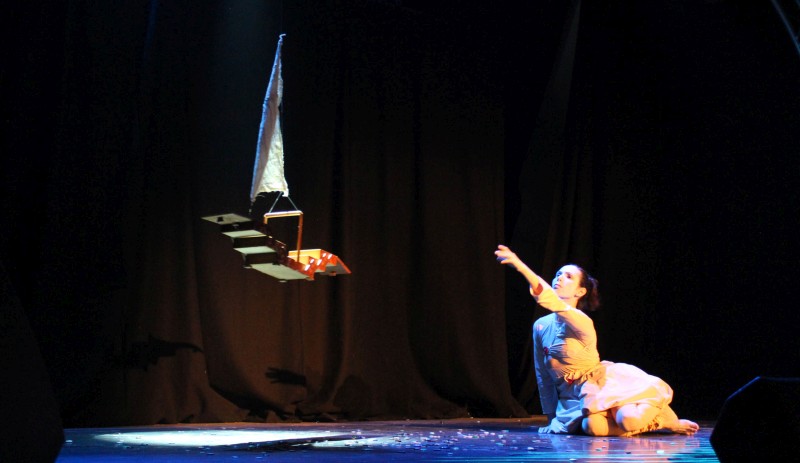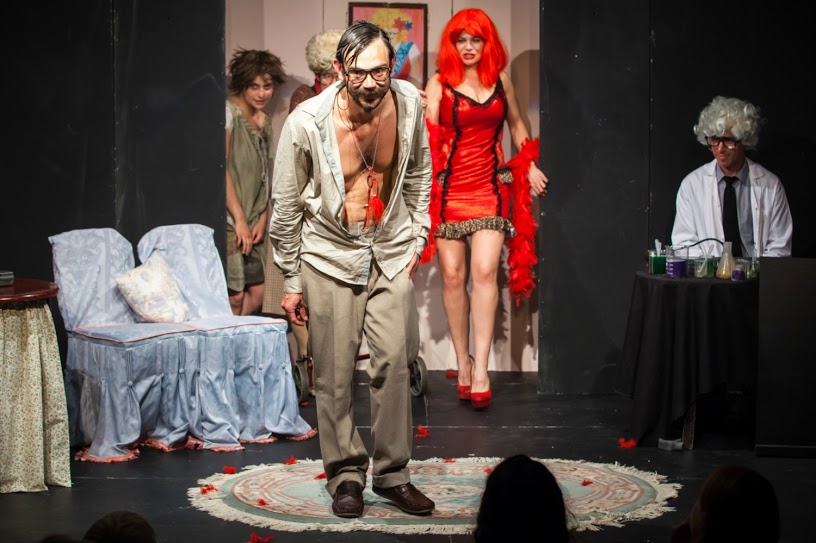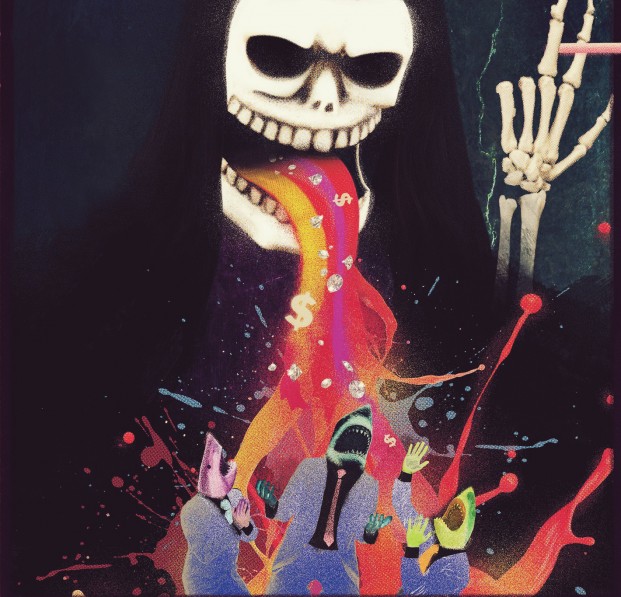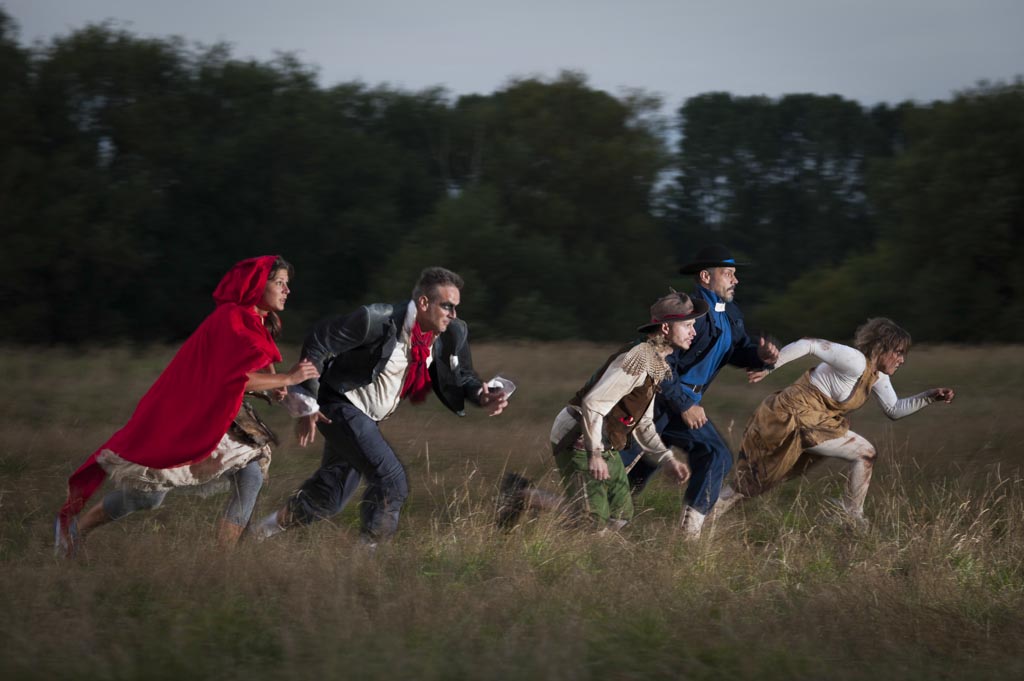 It’s a minimalist scene on entering: an empty stage, with a large projection screen at the back and projector centre stage. To the left a sound desk, anglepoise lamp, and a couple of guitars. Opposite, on the far right of the stage, is the animation table, a camera on a rostrum, paper and art materials meticulously laid out, and a couple more lamps. All black and white functionality.
It’s a minimalist scene on entering: an empty stage, with a large projection screen at the back and projector centre stage. To the left a sound desk, anglepoise lamp, and a couple of guitars. Opposite, on the far right of the stage, is the animation table, a camera on a rostrum, paper and art materials meticulously laid out, and a couple more lamps. All black and white functionality.
The performers enter and at once the music and images begin to appear. We are immersed in the drawn world of the Dark Circus.
At the sound desk is Jean-Baptiste Maillet and stationed at the animation table is Romain Bermond, though the division of labour isn’t quite so clear cut as this image suggests. Maillet’s drum takes on the role of the circus ring, and Jean-Baptiste’s guitar not only delivers the soundtrack for the lion tamer but its beautifully painted neck ‘becomes’ him, and the soundhole the lion’s cage.
An inky brush line begins to appear on the screen. I can see Romain drawing it live on the animation table. I experience slight vertigo seeing the image appear on the screen without the artist’s hand or brush being visible – something to ask about at the end of the show discussion.* The magical black line describes big top, caravan, box office, trees and paths, the city’s skyscrapers, and the road carrying the audience to the see the show.
Hand-cut paper cars and figures on sticks make the Circus Cavalcade. As the background is wound furiously along by Romain’s other hand, the clusters of figures he holds still in front of the camera begin to walk along streets and paths towards the circus. Soon we are arriving at the Big Top. A fantastic sandy transition takes us smoothly inside, where the circus ring and eager audience awaits.
I’m relieved to see Romain’s hands, silhouetted black on the big screen like a pair of puppeteer’s gloves as they move the sand on the overhead projector.
Jean-Baptiste and Romain seamlessly pull focus from one camera to another, mixing high-tech with low, scene by scene, with perfect synchronisation and precision. We can see the action on the screen and are also party to the speedy scene changes and set-ups by one as the other literally draws the audience’s attention his way. It is thrilling to watch the action on the screen and associate it with the strange and precise choreography of the live performers.
The circus performers are introduced in turn, each with their own soundtrack and different style or technique to bring them to life on the stage, each more thrilling than the last. My favourite ‘gasp out loud’ moment was when a beautifully-rendered circus pony suddenly found animated life of its own and made a bolt for freedom, no longer fettered by the artist’s hand it bucked and kicked and galloped around the page, while the artist frantically drew its changing scenery and attempted to draw a fence to keep it in. It’s a moment of alchemy and joy and nicely recalls Eadweard Muybridges’s pioneering stop-motion photographs of running horses and pre-animation techniques.
‘Come for the show, stay for the woe’, the Ringmaster cries, but for me perhaps the woe could have been a bit more miserable: I like my Dark Circus DARK. Dark Circus is a sweet story, even the tragically ‘sticky’ ends of the circus characters are delivered with gentle humour and all are redeemed in the end.
The production was witty, stylish, and fabulously inventive, delivered with dexterous sleight of hand by Stereoptic after what must have been hours, weeks, years of creative play and practice. They promised us that we would see how it’s done, and we can certainly see them doing it but their fluent use of technology and smooth segues between scenes and techniques left the magicians’ sleeves unexamined and their magic intact.
*The artist’s brush and hand wasn’t visible in the opening scene because it was filmed from the underside of the paper.




